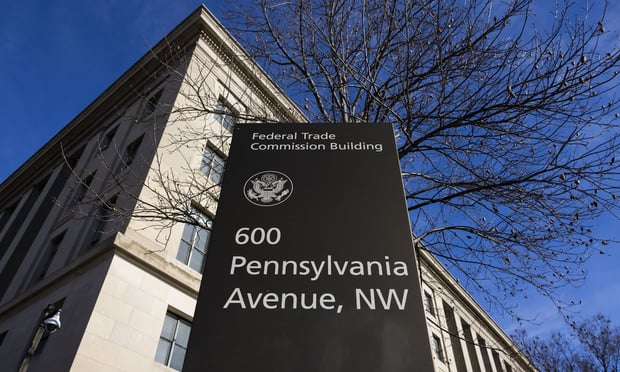You will undoubtedly be reading a lot over the next few months about 12 members of Congress who wield extraordinary power over the future of hundreds of federal programs and tax expenditures.
They are the members of the newly created Joint Select Committee on Deficit Reduction charged with identifying at least $1.2 trillion in deficit reductions over the next decade. The committee can consider everything from spending cuts to tax reform to accomplish this objective.
The committee has an exacting schedule to make its recommendations and issue a final report to Congress by Nov. 23. Once Congress receives the report, it must come to the House and Senate floors for an up or down vote without amendments by Dec. 23.
Additionally, when the president recently unveiled his new jobs program, The American Jobs Act, he added yet another dimension to the panel's mission. He tasked the committee with finding the additional deficit reduction necessary to pay for the program and still meet its deficit target. While NAFCU appreciates the president's efforts to address our nation's stubborn unemployment situation, we were disappointed that lifting the member business lending cap was omitted from the plan since it will help spur job creation. We will continue to advocate for its inclusion in any jobs bill going forward. The challenge facing the committee now has grown significantly. Most estimates put the cost of The American Jobs Act at $450 billion.
The panel is due to receive recommendations from congressional committees for items to consider by Oct. 14. This accelerated timeline underscores the need, when meeting with elected officials, to reinforce the service credit unions provide to America's consumers on a daily basis.
The panel includes Republican Reps. Jeb Hensarling (Texas), Dave Camp (Mich.), Fred Upton (Mich.) and Sens. Jon Kyl (Ariz.), Rob Portman (Ohio) and Pat Toomey (Pa.); and Democratic Reps. Chris Van Hollen (Md.), Jim Clyburn (S.C.), Xavier Becerra (Calif.) and Sens. Patty Murray (Wash.), Max Baucus (Mont.) and John Kerry (Mass.). It is co-chaired by Hensarling and Murray.
One key item you can point to is NCUA's second-quarter data, show a 52% increase in demand for consumer friendly, short-term small loans from credit unions as an alternative to predatory payday loans. This reaffirms the findings of a 2010 NAFCU member survey, which found that two-thirds of respondents indicated that they have an underserved area as part of their membership and 97.2% have loans outstanding in those areas.
Ironically, the nation's fragile economic landscape today parallels many of the same conditions that existed when Congress established the Federal Credit Union Act in 1934. Today, credit unions provide a valuable, competitive difference to nearly 93 million members. According to a recent Credit Power Index comparison reported by The Street.com, “Our Credit Power Index figure for credit unions at the end of July was just 17.55…more than five and a half points better for consumers than the interest rate climate found at banks. It's no wonder these nonprofit institutions have seen their numbers swell since the recession as Americans seek out better rates.”
As you meet with your elected officials, it is worth noting credit unions have earned the respect and admiration of policymakers because of our sensible business model and member focus.
The former chairman of the House Financial Services Committee, Barney Frank (D-Mass.), has often said, “If credit unions made all of the mortgage loans, then there would have been no subprime crisis, and therefore no economic crisis.” Indeed, Rep. Frank and former Treasury Secretary Hank Paulson both acknowledged that credit unions have been impacted by the current crisis through “no fault of their own.”
Speaking of the financial crisis, let's not miss the opportunity to remind lawmakers of how credit unions have endured during these difficult economic times. Without accessing TARP funds or being a party to a bailout, credit unions have continued to self-fund their recovery.
This congressional session is sure to test our mettle, making it all the more important that you remind your legislators that credit unions are about Main Street, not Wall Street.
Credit unions continue to provide a unique service to nearly 93 million members. Credit unions live up to the spirit as well as the letter of the 1934 Federal Credit Union Act. The defining characteristics of a credit union remain the same today: credit unions, regardless of size, are not-for-profit cooperatives that are member-owned.
Fred Becker is president/CEO of NAFCU.
Complete your profile to continue reading and get FREE access to CUTimes.com, part of your ALM digital membership.
Your access to unlimited CUTimes.com content isn’t changing.
Once you are an ALM digital member, you’ll receive:
- Breaking credit union news and analysis, on-site and via our newsletters and custom alerts
- Weekly Shared Accounts podcast featuring exclusive interviews with industry leaders
- Educational webcasts, white papers, and ebooks from industry thought leaders
- Critical coverage of the commercial real estate and financial advisory markets on our other ALM sites, GlobeSt.com and ThinkAdvisor.com
Already have an account? Sign In Now
© 2024 ALM Global, LLC, All Rights Reserved. Request academic re-use from www.copyright.com. All other uses, submit a request to [email protected]. For more information visit Asset & Logo Licensing.









